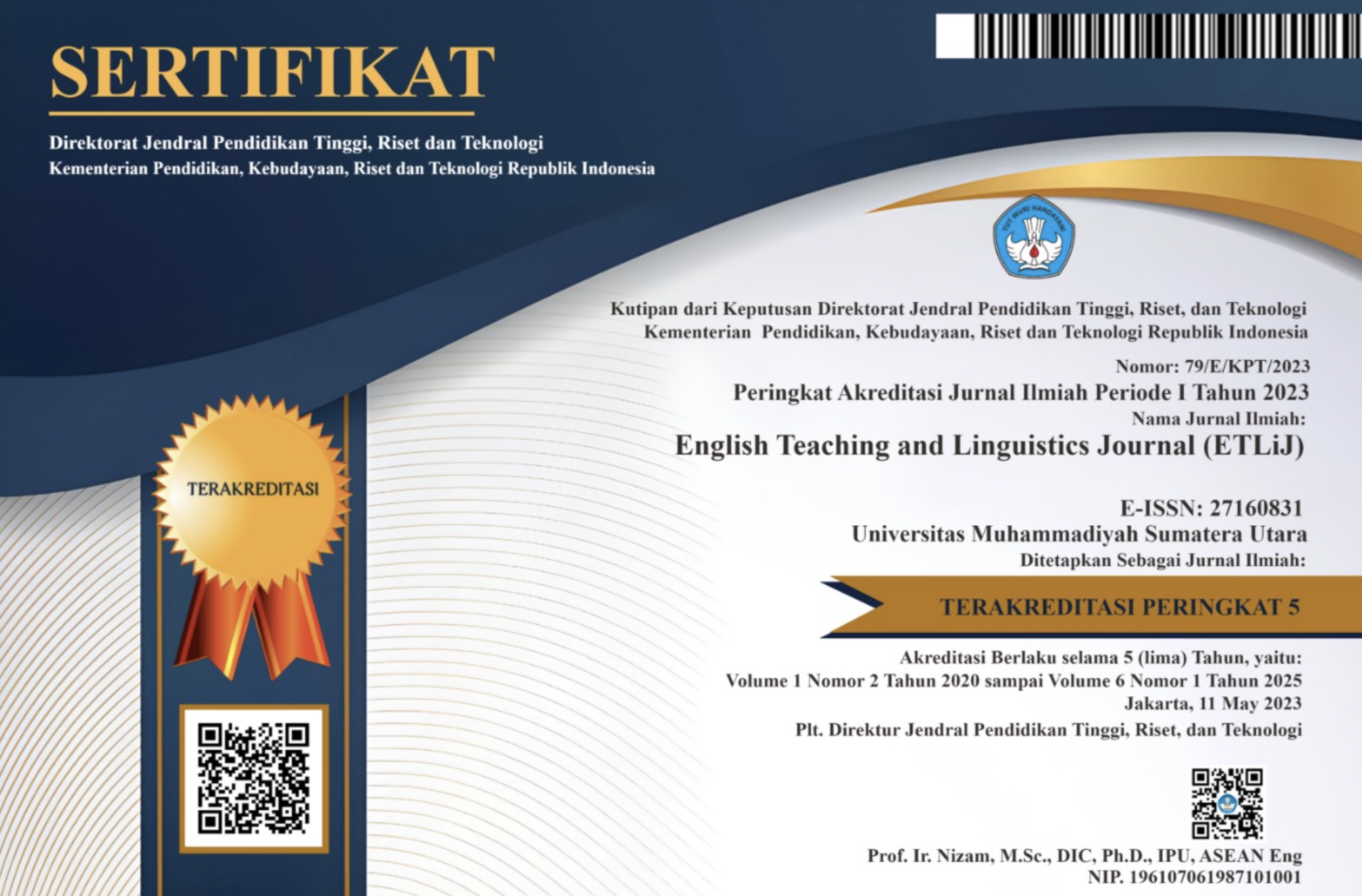Factors Contributing to Speaking Difficulties in Young EFL Learners: An Exploratory Study
Abstract
Many English as a Foreign Language (EFL) learners, especially young beginning-level students with limited exposure to English, struggle to speak the language fluently. However, research specifically examining the obstacles to speaking skill development among young EFL learners is lacking, particularly in regions where English has no official status. This study explored Indonesia EFL teachers' perceptions of factors contributing to early primary school students' difficulties with spoken English. The goal was to establish a foundation for further research and pedagogical improvements. A questionnaire with Likert-scale ratings and open-ended questions was given to 194 teachers from 70 Indonesia public and private primary schools. Quantitative and qualitative analyses identified patterns and rationales in the teachers' judgments of sources of students' speaking struggles. Pronunciation, vocabulary gaps, grammar, lack of practice, and anxiety were most frequently cited as moderate to substantial challenges. Teaching experience and school type influenced perceptions of anxiety's role and scaffolding orientations. The findings offer initial insight into context-specific developmental and environmental constraints on young Indonesia learners' progress in speaking English. Future targeted research can build on this exploratory platform to inform responsive instructional interventions during this critical period of language acquisition
Keywords
Full Text:
PDFReferences
Abrahamsson, N., & Hyltenstam, K. (2009). Age of onset and nativelikeness in a second language: Listener perception versus linguistic scrutiny. Language Learning, 59(2), 249-306. https://doi.org/10.1111/j.1467-9922.2009.00507.x
Alharbi, A. A. (2015). Improving students’ English speaking proficiency in Saudi public schools. International Journal of Instruction, 8(1), 105-116. https://doi.org/10.12973/iji.2015.818a
Alrabai, F. (2014). A model of foreign language anxiety in the Saudi EFL context. English Language Teaching, 7(7), 82-101. http://doi.org/10.5539/elt.v7n7p82
Al-Sibai, D. M. (2005). L2 oral proficiency problems: Perceptions of Saudi ESL learners at King Saud University in Riyadh. King Saud University Journal for Languages and Translation, 17, 31-56.
De Jong, N. H., Steinel, M. P., Florijn, A. F., Schoonen, R., & Hulstijn, J. H. (2012). Facets of speaking proficiency. Studies in Second Language Acquisition, 35(1), 5-34. https://doi.org/10.1017/S027226311120012X
Derwing, T. M., & Munro, M. J. (2009). Putting accent in its place: Rethinking obstacles to communication. Language Teaching, 42(4), 476-490.
Hasnah, Y., Ginting, P., Supiatman, L., Kharisma, A. J., & Siahaan, H. S. (2024). How Do Locally Produced EFL Textbooks Endorse Critical Thinking Skills in Indonesia? A Content Analysis. Journal of Language Teaching and Research, 15(1), 190-200.
Kharisma, A. J., Ginting, P., Hasnah, Y., & Utomo, M. I. (2023). LINGUISTIC LANDSCAPE PORTRAYED IN INDONESIAN EFL TEXTBOOKS: A DESCRIPTIVE STUDY. Jurnal As-Salam, 7(2), 195-214.
Kirkpatrick, A. (2007). World Englishes. Implications for international communication and English language teaching. Cambridge: Cambridge University Press.
Levelt, W. J. M. (1989). Speaking. From intention to articulation. Cambridge, MA: MIT press.
Mai, T. T. T., & Iwashita, N. (2012). A comparison of learners' and teachers' attitudes toward communicative language teaching at two universities in Vietnam. University of Sydney Papers in TESOL, 7, 25-49.
Mirsane, M., & Khabiri, M. (2016). The effect of teaching critical thinking on EFL learners’ speaking ability: A role play strategy. Issues in Language Teaching, 5(1), 1– 26. https://doi.org/10.22054/ilt.2016.6702
Nikolov, M. (2009). Early learning of modern foreign languages: Processes and outcomes. Multilingual Matters.
Noom-ura, S. (2013). English-teaching problems in Indonesia and Indonesia teachers’ professional development needs. English Language Teaching, 6(11), 139-147. http://doi.org/10.5539/elt.v6n11p139
Pinter, A. (2017). Teaching young language learners (2nd ed.). Oxford University Press.
Prapphal, K. (2003). English proficiency of Indonesia learners and directions of English teaching and learning in Indonesia. Journal of English Studies, 1(1), 6-12.
Rabab’ah, G. (2016). Strategies of repair in EFL learners’ oral speech. English Language Teaching, 9(6), 35-43. http://doi.org/10.5539/elt.v9n6p35
Saengboon, S. (2004). Second language acquisition (SLA) research and its pedagogical implications for the teaching of English in Indonesia. Graduate School of English, Assumption University, Indonesia.
Tuan, N. H., & Mai, T. N. (2015). Factors affecting students’ speaking performance at LE Thanh Hien High School. Asian Journal of Educational Research, 3(2), 8-23.
Wiriyachitra, A. (2002). English language teaching and learning in Indonesia in this decade. IndonesiaTESOL Focus, 15(1), 4-9.
Yang, X. (2016). Teaching oral English in schools of Tibet, China: Problems and solutions. Journal of Language Teaching and Research, 7, 151-156. http://doi.org/10.17507/jltr.0701.19
DOI: https://doi.org/10.30596/etlij.v5i1.18121
Refbacks
- There are currently no refbacks.

This work is licensed under a Creative Commons Attribution 3.0 License
ISSN: 2716-0831





